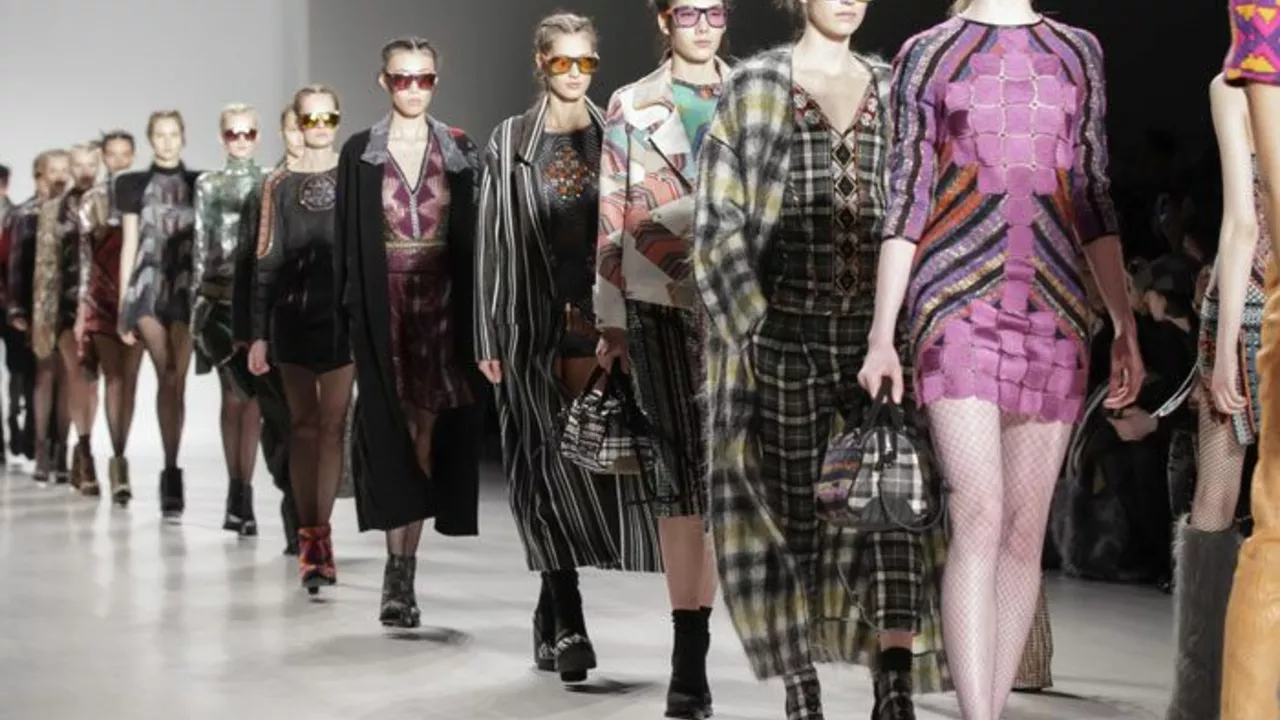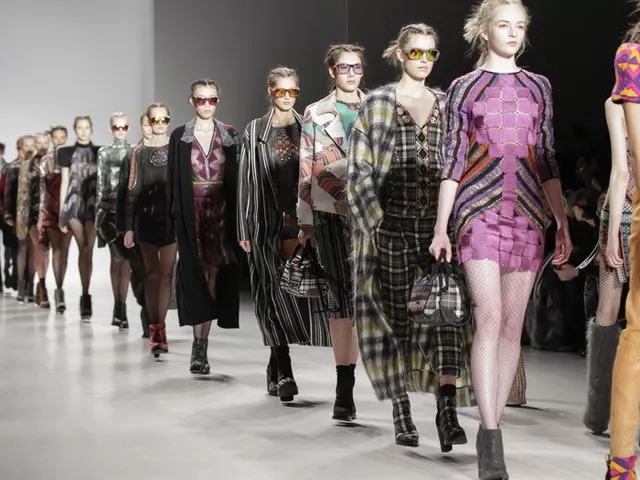Why is fashion two seasons ahead?

The Mysteries of the Fashion World
Ever wonder why the clothing industry seems to be living two seasons ahead of the rest of the world? After all, it would be hard to predict if, come winter, Misha, my Siberian Husky, would prefer a new fluffy toy or a set of shiny dog boots. This mismatch between the fashion calendar and the actual seasons isn't due to designers having a quirky sense of humor or an advanced weather-predicting ability. No, there is a science to the madness!
Crafting the Dream: The Production Process
The magic of a fashion piece doesn't just start and end on the runway. Ah, if only it were that simple. If that were the case, Jasper, my Maine Coon cat with a sunny kittenish attitude, would probably give Oscar de la Renta a run for his money. But no, it's all about planning, planning, and more planning — imagine Tetris, but with fabrics and hangers. The entire process, from the designer's vision to the hanger at your local boutique, might span anywhere from 12 to 18 months. Fabric development, color swatching, sourcing, pattern making, prototyping, finalizing, manufacturing, and distribution — each step requires meticulous scrutiny and sizable lead time. The long production process explains why fashion needs to be two seasons ahead.
Trends Forecasting: Catching the Future Wave
'Seeing into the future' — this isn't a line off a fortune cookie but a critical skill fashion industry insiders cannot do without. Trend forecasting is where art meets science meets 'can I really predict if neon is going to rock two years from now?' It entails predicting the colors, fabrics, textures, and styles that will be popular in an upcoming season based on various social and cultural trends. The predictions aren't just wild guesses or abstract moves on a chessboard. It's about looking into human psychology, socio-cultural changes, and many other things. It would be less complicated, and arguably more fun, to try and predict Jasper's preference for mouse toys over feathered ones. But I suppose the mystique of fashion demands a touch more complexity, doesn’t it?
Buying Cycle: Inventory Mumbo Jumbo
Walking into a store filled with trendy clothes is like walking into a candy shop. The clothes even come in delicious hues of pastels and neons. But behind these enticing displays lie complex calculations and logistics, otherwise known as inventory management. Retailers usually buy their stock 6 months in advance, and pre-orders from buyers guide the production quantity and styles. You wouldn't want to mass-produce that flamboyant fluffy sweater only to have it gathering dust in the store, right? Hence, even the buying cycle contributes to the fashion industry's time travel.
Selling Cycle: Consumer Catch-22
Just as the world seems to love playing fetch with my cheerful Siberian Husky, Misha, it also loves a good paradox, and the world of fashion is no exception. Enter the selling cycle: a classic chicken or egg scenario where one is unsure if consumers respond to trends because they are advertised, or if they are advertised because consumers could conceivable want them. Regardless of the answer, this Catch-22 influences the fashion calendar. Collections are dropped early to seize the maximum market coverage, leaving enough room for markdowns and sales at the end of the season. It's a cyclical loop, like Misha endlessly chasing his tail. Except, you know, with stylish clothes involved.
Media and Marketing: The Magic Charm
One cannot discuss fashion trends without bringing the media into the picture. Just as Jasper can't resist a brand-new toy mouse, consumers are guided by influencers, media, and marketing. To strategize well in advance, fashion houses and designers present their collections to fashion journalists and stylists months ahead of the season. This step promotes press coverage and trendsetters' endorsement, aiding consumers in seeing the trends and planning their purchases. So, the next time you marvel at an Instagram post showcasing a suede coat on a sunny beach, remember that it's all part of the masterplan.
Challenges and Changes: A Brave New Fashion World
The world is changing — faster than a kitten growing into a cat, as Jasper would vouch. Consumers are now more environmentally conscious, leaning toward sustainable and non-seasonal collections. This shift puts pressure on the industry to rethink its traditional timeline and production and contributes to the concept of 'seasonless' fashion. Moreover, technological advancements are reforming manufacturing timelines. 'Micro-seasons,' customization, drop culture, and digital shows are incipiencies of this transformation. As Misha, my Siberian Husky would affirm, sometimes change can be good and exciting - much like that moment when you finally find your favorite toy under the couch after months of searching.
Xander Fontaine

Hi, I'm Xander Fontaine, a renowned expert in the world of fashion and beauty. With years of experience as a stylist, I have a keen eye for the latest trends and timeless classics. My passion for writing has led me to share my knowledge through articles, blogs, and editorials, helping others elevate their personal style. I believe that fashion and beauty should be accessible and enjoyable for everyone, and I'm committed to spreading that message with my work.
View all posts by: Xander FontaineWrite a comment
Categories
RECENT POSTS
Do you like or dislike ads on magazine covers? Why?
Ads on magazine covers are a common form of advertising and often stir up strong opinions. Some people find them useful, while others find them intrusive and distracting. One of the main benefits of ads on magazine covers is that they are often eye-catching and can draw attention to the magazine. Additionally, they provide a source of revenue for the publisher. On the other hand, ads on magazine covers can be seen as an invasion of privacy and often interrupt the reading experience.
How to cover broken skin with makeup?
Makeup can be used to cover broken skin with some careful application techniques. The first step is to clean the area thoroughly and apply a thin layer of moisturizer. A green-tinted concealer should be applied over any redness. A light foundation should then be applied to even out the skin tone before using a thicker concealer to blend everything together. Finally, a light dusting of powder should be used to set the makeup in place. Keywords: broken skin, makeup, moisturizer, concealer, foundation, powder.
How can a beauty brand find a distributor in China?
In order to find a distributor in China, a beauty brand must research the market and have a comprehensive understanding of the country's regulations, laws and customs. It is important to have an understanding of the Chinese culture and be able to tailor the marketing campaigns accordingly. Additionally, beauty brands should establish a presence in the Chinese digital space, create a Chinese website and build relationships with local influencers. Finally, they should consider partnering up with a professional import-export agency to ensure a successful launch in the Chinese market.
Why is fashion two seasons ahead?
Well, isn't this a fun topic to dive into? It's like we're on a fashion time machine! So, here's the scoop: fashion is always two steps – or should I say, seasons – ahead for planning and production purposes. These fashion gurus need time to create those snazzy outfits we love so much and ensure they're ready for runway and retail. It's like the fashion world is from the future, always showing us what we'll be wearing next while we're still enjoying our current wardrobe. So, keep up, folks! The fashion train waits for no one!
Why is fashion industry obsessed with skinny bodies?
The fashion industry is often criticised for its obsession with thin bodies and unrealistic standards of beauty. This has led to an unhealthy obsession with thinness, and a lack of diversity in the fashion industry. The fashion industry perpetuates the ideal of a thin body type by promoting it in magazines, on the runway and in ad campaigns. This is resulting in an unhealthy body image among young people, and a lack of acceptance for people of all body types. To combat this, the fashion industry needs to promote a more diverse and inclusive representation of beauty, both on and off the runway.




